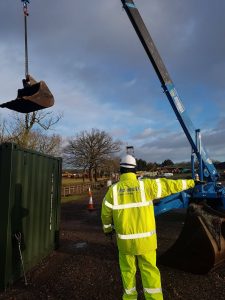| Course Aims: | The CPCS A61 course aims to provide the candidate with a thorough practical and theory training in the role of an Appinted Person in order to to enable the candidate to pass the CPCS Theory and Practical Tests. |
| Course Content | Through a combination of targeted training and experience, an appointed person will be able to:
|
| Course Requirement | All visitors must report to reception on arrival and follow site safety rules at all times.There are no catering facilities on site, so delegates need to provide their own lunch. There are tea and coffee facilities available.Candidates must bring and wear their PPE on site for plant testing. They must also bring signature and photographic identification as required for all testing.
The CPCS Theory test is recorded digitally by the tester to ensure adherence with CPCS Standards. The CPCS Practical test may be recorded using a Video recorder if the CPCS request it. |
| Examination Board | The Construction Plant Competence Scheme (CPCS) is recognised by the UK Contractors Group (UKCG) and Major Home Builders Group (MHBG) as the preferred card to comply with codes of practice for competence and certification. It was launched in 2003 to help them comply with regulations and requirements and aims to apply common standards for all plant operators.CPCS is owned by the Construction Industry Training Board (otherwise known as CITB). For more information visit their website at www.citb.co.uk. |
| Assessment | To achieve the Red CPCS Trained Operator Card candidates must pass both the CPCS Theory Test and the Practical Test.These tests can be viewed online by clicking here. |
| Refresher / Re-qualification Information | Once you have achieved your Red CPCS Trained Operator Card it lasts for 2 years.During these 2 years you must work towards and achieve your NVQ in Plant Operations to upgrade to a Blue CPCS Competence Card.Total Construction Training may be able to offer you funding towards this NVQ. |

